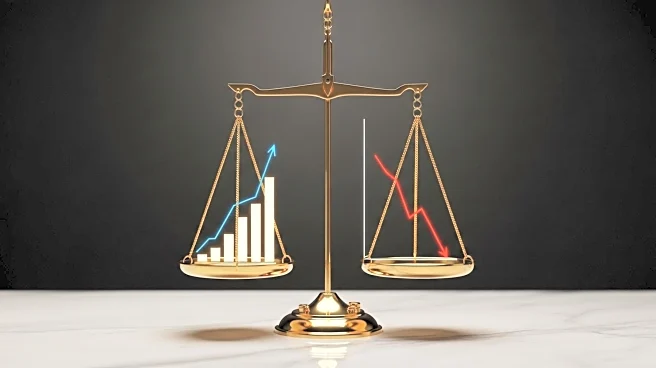What's Happening?
The Federal Reserve has cut its benchmark interest rate for the first time in nine months, lowering it to about 4.1%. This decision comes as inflation remains high and the labor market cools. While the rate cut is not directly linked to consumer borrowing costs, it influences rates for credit cards, auto loans, and mortgages. Analysts suggest that the impact on mortgage rates has already been largely priced in, with rates having fallen since January. The rate cut is expected to provide some relief for borrowers over time, easing the burden on households with high-interest debt.
Why It's Important?
The Federal Reserve's rate cut is a critical tool for managing economic growth and inflation. By lowering rates, the Fed aims to stimulate economic activity and support employment. For consumers, lower rates can reduce the cost of borrowing, making it easier to manage debt and finance large purchases. However, the benefits may be slow to materialize, particularly for auto loans and credit card rates. The broader economic impact will depend on how effectively the rate cut stimulates spending and investment, and whether it can offset the challenges posed by high inflation and a weak job market.
What's Next?
The Federal Reserve has projected additional rate cuts before the end of the year, which could further influence consumer borrowing costs. Financial markets and consumers will be closely monitoring these developments, as well as the Fed's ongoing efforts to balance inflation control with economic growth. The effectiveness of these measures will be critical in determining the trajectory of the U.S. economy in the coming months.










